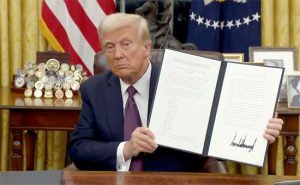The book “Hostage to Khomeini” explains how Iran’s oppressive government has become covertly controlled by the global political elite
by Edward Ulrich, updated February 1, 2020
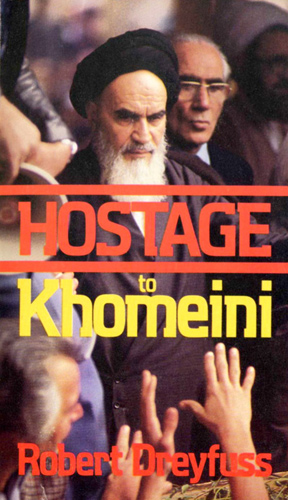
“Hostage to Khomeini,” by Robert Dreyfuss.
The book “Hostage to Khomeini,” written by Robert Dreyfuss in 1980, explains specifically how the progressive pro-American Shah of Iran was covertly overthrown in 1979 by the global political elite, being replaced with the brutal Ayatollah Khomeini who was installed as “controlled opposition” in order to intentionally wreck progress in the country and drag it back to the Dark Ages. (Khomeini was the instigator of taking the American embassy in Tehran hostage in 1979.) Iran was a very modern and Westernized country under the Shah until the coup occured which installed Khomeini.
You can buy a copy of the book on Amazon at this link, and you can download a PDF of the book at this link.
[Editor’s note— In the future I will create an article which summarizes the book point-by-point, however for the time being I have posted the following basic summaries of each of its chapters.]
Article Notes
new:
February 1, 2020 - Clarified about the information explained in Chapter 3 being the genuine precursor for what would eventually become the “Iran” part of the “Iran-Contra Scandal.”
January 13, 2020 - Expanded various information in the article.
January 10, 2020 - Added additional information to the article, including images from the book and information detailing the BBC’s role in spreading revolutionary propaganda throughout Iran.
January 13, 2020 - Expanded various information in the article.
January 10, 2020 - Added additional information to the article, including images from the book and information detailing the BBC’s role in spreading revolutionary propaganda throughout Iran.
Following is a summary of the chapters in the book:
From Chapter 1, pages 1 - 2:
In Tehran, uncontrolled mobs surge through the streets brandishing their newly acquired automatic weapons, sacking public buildings and tearing down the regime of the deposed Shah. The bloody reign of terror has already begun. Quickly and silently, top military and intelligence officers who have refused to cooperate with the new government are executed by unofficial assassination squads. In the cities, as in the towns and villages, many hundreds more are murdered by frenzied crowds. It is February 12, 1979, just hours after the Ayatollah Khomenini has proclaimed the establishment of the Islamic Republic of Iran.
In Washington, President Carter convenes a hurried news conference to tell the world, “I believe the people of Iran and the government will continue to be our friends.”
Many people are shocked by Carter’s willingness to befriend the bloody new regime. ... In reality, the President’s official welcome to the Khomeini dictatorship signaled a far deeper truth. Carter had great reason to believe that the regime of the mullahs in Iran would indeed be “our friend”: He and his administration had put Khomeini in power.
Not simply by inaction. The Carter administration— with sober deliberation and with malice aforethought— had given aid to the movement that originated the overthrow of the Shah of Iran. The Carter administration was involved every step of the way— from the propaganda preparations to the supply of arms and ammunition, from the behind-the-scenes deals with traitors in the Shah’s military to the final ultimatum to the beaten leader in January 1979 to leave Iran. Perhaps no other chapter in American history is so replete with treachery to the ideals upon which the nation was founded.
...
In Washington, President Carter convenes a hurried news conference to tell the world, “I believe the people of Iran and the government will continue to be our friends.”
Many people are shocked by Carter’s willingness to befriend the bloody new regime. ... In reality, the President’s official welcome to the Khomeini dictatorship signaled a far deeper truth. Carter had great reason to believe that the regime of the mullahs in Iran would indeed be “our friend”: He and his administration had put Khomeini in power.
Not simply by inaction. The Carter administration— with sober deliberation and with malice aforethought— had given aid to the movement that originated the overthrow of the Shah of Iran. The Carter administration was involved every step of the way— from the propaganda preparations to the supply of arms and ammunition, from the behind-the-scenes deals with traitors in the Shah’s military to the final ultimatum to the beaten leader in January 1979 to leave Iran. Perhaps no other chapter in American history is so replete with treachery to the ideals upon which the nation was founded.
...
Other aspects of Chapter 1 include an overview of the strategy of the global elite seeing Iran as a “test-tube experiment” to see if a country can be made to enslave itself, and an overview of the covert involvement of Western organizations and individuals such as the Council on Foreign Relations (CFR), the Royal Institute of International Affairs, Zbigniew Brezinski of the National Security Council, former Secretary of State Cyrus Vance, and the NSC’s Iran Task Force special coordinator George Ball. Also mentioned is that the groundwork for the Iranian Revolution was laid out some years earlier at the Colorado-based “Aspen Institute,” with the actual covert activity then being directed by the British Intelligence Service.
Chapter 2 details various aspects of how the British and U.S. covertly brought down the pro-Western Shah of Iran, including through their control of the Savak security services as well as fomenting revolution amongst large segments of the population through the use of inflammatory BBC broadcasts.
From pages 34 - 35 of the PDF: [(Added to the article January 10, 2020)]
Without the British Broadcasting Corporation, there would have been no Khomeini. During the entire year of 1978, the BBC stationed dozens of correspondents throughout the country, in every remote town and village. BBC correspondents, often part-time stringers for Khomeini, sometimes full-time British nationals in the employ of the British secret service, worked as the intelligence service for the revolution.
As soon as a small incident occurred in some village, the BBC correspondent on the scene would relay the news to BBC headquarters in Tehran. Within hours, BBC Persian-language broadcasts would beam exaggerated accounts of the incident to all Iran! functioning as the national loudspeaker for the mullahs and their sympathizers, each day the BBC would beam into Iran gory accounts of alleged atrocities committed by the Iranian police—often without checking the veracity of the report. The Iranian government was never given a chance to rebut. Propagandists like Ibrahim Yazidi were given hours of air time to vent their spleen against the Shah, all of which was eagerly listened to by the Shah’s enemies in Iran.
By late fall, the BBC was broadcasting the long, ranting speeches of the lunatic Ayatollah Khomeini himself—in their entirety. Several times during November and December, the Shah said he would take reprisal against London if the BBC’s subversion were not halted. Once he threatened to break diplomatic relations with Great Britain. But the British government solemnly swore it had no influence over the BBC which, they claimed, was a “private corporation.” At least twice the Shah summoned the British ambassador in Tehran to protest the actions of the BBC, but to no avail. From time to time, the government would expel a BBC correspondent, but no more.
Not until November 30, 1978, did a member of the Iranian Parliament, Hossein Daneshi from Abadan, demand to know why the BBC had been permitted to play its provocateur role: “A glance at the events and developments throughout the world over the past year demonstrates a diabolical plan aimed at the disintegration of Iran.... You should not be surprised if you see that the BBC prepares programs and during its three programs in Persian thinks of nothing but to make provocations, create disturbances, and chaos. This old fox Britain, no longer able to secure good for itself, is looking for a prey.”
...
... With the gathering storm, the BBC became the de facto coordinator for revolution. On less than 24 hours notice, Tehran’s mullahs could organize simultaneous demonstrations in Iranian cities separated by thousands of miles—through the BBC. In Paris, Khomeini made tapes ordering his cult followers to rampage through the streets. Within hours, his precise instructions, in his own voice in Persian, would be broadcast into Iran from BBC’s London headquarters.
Belying its origins as an arm of the British Special Operations Executive, the BBC began to broadcast spy-war rumors in December, such as reports claiming that the Shah had fled the country, or had abdicated the throne to his son, or had gone insane. In December the Iranian Information Minister Tehrani accused the BBC of inciting the Iranian oil workers to strike. A BBC United Press International correspondent was expelled for reporting that the Shah had been assassinated. For a brief time that month, as “The Washington Post” reported that the BBC was considered to be Iran’s “Public Enemy No. 1”, the military government of Prime Minister General Gholam Reza Azhari jammed the BBC broadcasts. It was too late.
The Shah’s enemies in the clergy were not adverse to a little pychological warfare of their own. Once, during a scheduled demonstration in Tehran on December 2, 1978, when the violence that antigovernment fanatics hoped for did not materialize, the Shiite clergy brought professionally made tape recordings of screams, gunshots, and violence played over the loudspeakers from the minarets of the mosques! Within hours, BBC correspondents in “on the scene” newscasts had their accounts of the December 2 demonstrations beaming into Iran, complete with background noise courtesy of the mullah’s electronic equipment. The next day, people emerging from their homes found red stains on the pavement where the march had taken place; the mullahs had poured red-colored dye on the streets to simulate blood.
Tactics like this, everyone knew, so highly effective with Iran’s population, were not devised by illiterate mullahs.
As soon as a small incident occurred in some village, the BBC correspondent on the scene would relay the news to BBC headquarters in Tehran. Within hours, BBC Persian-language broadcasts would beam exaggerated accounts of the incident to all Iran! functioning as the national loudspeaker for the mullahs and their sympathizers, each day the BBC would beam into Iran gory accounts of alleged atrocities committed by the Iranian police—often without checking the veracity of the report. The Iranian government was never given a chance to rebut. Propagandists like Ibrahim Yazidi were given hours of air time to vent their spleen against the Shah, all of which was eagerly listened to by the Shah’s enemies in Iran.
By late fall, the BBC was broadcasting the long, ranting speeches of the lunatic Ayatollah Khomeini himself—in their entirety. Several times during November and December, the Shah said he would take reprisal against London if the BBC’s subversion were not halted. Once he threatened to break diplomatic relations with Great Britain. But the British government solemnly swore it had no influence over the BBC which, they claimed, was a “private corporation.” At least twice the Shah summoned the British ambassador in Tehran to protest the actions of the BBC, but to no avail. From time to time, the government would expel a BBC correspondent, but no more.
Not until November 30, 1978, did a member of the Iranian Parliament, Hossein Daneshi from Abadan, demand to know why the BBC had been permitted to play its provocateur role: “A glance at the events and developments throughout the world over the past year demonstrates a diabolical plan aimed at the disintegration of Iran.... You should not be surprised if you see that the BBC prepares programs and during its three programs in Persian thinks of nothing but to make provocations, create disturbances, and chaos. This old fox Britain, no longer able to secure good for itself, is looking for a prey.”
...
... With the gathering storm, the BBC became the de facto coordinator for revolution. On less than 24 hours notice, Tehran’s mullahs could organize simultaneous demonstrations in Iranian cities separated by thousands of miles—through the BBC. In Paris, Khomeini made tapes ordering his cult followers to rampage through the streets. Within hours, his precise instructions, in his own voice in Persian, would be broadcast into Iran from BBC’s London headquarters.
Belying its origins as an arm of the British Special Operations Executive, the BBC began to broadcast spy-war rumors in December, such as reports claiming that the Shah had fled the country, or had abdicated the throne to his son, or had gone insane. In December the Iranian Information Minister Tehrani accused the BBC of inciting the Iranian oil workers to strike. A BBC United Press International correspondent was expelled for reporting that the Shah had been assassinated. For a brief time that month, as “The Washington Post” reported that the BBC was considered to be Iran’s “Public Enemy No. 1”, the military government of Prime Minister General Gholam Reza Azhari jammed the BBC broadcasts. It was too late.
The Shah’s enemies in the clergy were not adverse to a little pychological warfare of their own. Once, during a scheduled demonstration in Tehran on December 2, 1978, when the violence that antigovernment fanatics hoped for did not materialize, the Shiite clergy brought professionally made tape recordings of screams, gunshots, and violence played over the loudspeakers from the minarets of the mosques! Within hours, BBC correspondents in “on the scene” newscasts had their accounts of the December 2 demonstrations beaming into Iran, complete with background noise courtesy of the mullah’s electronic equipment. The next day, people emerging from their homes found red stains on the pavement where the march had taken place; the mullahs had poured red-colored dye on the streets to simulate blood.
Tactics like this, everyone knew, so highly effective with Iran’s population, were not devised by illiterate mullahs.
Chapter 3 talks about how the U.S. continued supplying enormous amounts of arms and military training to Iran even after it took hostages at the U.S. Embassy, as well as other covert associations. [Updated note: February 1, 2020— This is the genuine precursor to what would later become the “Iran” part of the “Iran-Contra Scandal” during the Reagan Administration, however what was reported by the media and taught as mainstream history about the matter is only a tiny part of the reality that is explained in this book.]
Chapter 4 talks about who the Ayatollah Khomeini really is, explaining that he has always been controlled by the British Secret Intelligence and CIA. Page 56 of the PDF contains a quote written by the Shah’s twin sister Ashraf Pahlavi in her book “Faces in a Mirror” saying there is a standing joke in Persia that if you picked up any clergyman’s beard you would see the words “Made in England” stamped underneath.
Chapter 5 is an introduction to the “Muslim Brotherhood” secret society, explaining that it is a covert London creation; it gives a brief history of Islam and explains British infiltration of the Middle East going back to 1820 using Freemasonry. On page 65 of the PDF it says, “In the Middle East, the British have always sought out the corrupt tribal leaders and the venal clergy to lead movements whose objectives have always seemed to coincide with British objectives. With the Muslim Brotherhood, British imperial policy was institutionalized in the form of a disciplined organization dedicated to returning the Middle East to the Dark Ages.” [Note also see A Summary of the Article “Masonic Muslim Brotherhood is the West’s Terror Arm”. ]
Chapter 6 explains the British involvement with the Muslim Brotherhood in Egypt until the 1950s when the organization then spread to all parts of the world.
Chapter 7 explains more issues with the Muslim Brotherhood, including details of some of the horrific terrorist attacks perpetrated by the organization.
Chapter 8 explains how the Muslim Brotherhood has involvement in the United States and how the Carter administration had always turned a blind eye to its violent pro-Khomeini activities.
Chapter 9 explains the ways that the global elite wrecked Iran by design through their installation of the Ayatollah (starting on page 116 of the PDF). Khomeini implemented brutal policies of mass degradation through the rule of 200,000 mullahs who now control every aspect of daily life in the country; people were publicly flogged, executed, and stoned to death; the media had been entirely taken over by the mullahs with no entertainment being allowed; alcohol was banned but opium was plentiful; in the summer of 1980 the sale of furniture was banned with furniture stores and factories being shut down; oil exports went from 6 million barrels a day to less than 500,000 a day; and massive construction projects underway during the Shah’s rule were shut down causing massive unemployment.
Following is a quote from page 120 of the PDF:
Within six months, Khomeini’s revolution has completely reversed the work to pull Iran up out of the Middle Ages. Immediately, $52 billion worth of development contracts in a dozen different areas were cancelled. This led to depression, as hundreds of other, smaller projects went down the tubes as well. .. Among the canceled projects were several nuclear plants worth at least $15 billion; the $1.1 billion Tehran airport; the $1.3 billion Teheran metro system; the $1.9 billion Sar Cheshmeh copper works, already 90 percent completed; the Bandar Addas steel works, valued at $2.9 billion; an enormous $6 billion project for gas injection and secondary oil recovery in the Iranian oil fields in Khuzestan; a $3.3 billion Mitsui Japanese plant in Bandar Shahpur for petrochemicals; the second gas pipeline to the Soviet Union, named Igat-2, worth $3 billion; a billion-dollar telecommunications system; several entire railway systems; a new port at Bandar Abbas; oil refineries, shipbuilding plants, steel works, and electrification projects.
The chapter then talks about how there was massive unemployment with at least two million people turning to opium which the farmers were encouraged to grow; how the universities were purged of “infidels,” with hundreds of professors at the Tehran University being driven out; history textbooks being re-written to eliminate all references to the Shah; opponents to Khomeini being attacked by fanatical mobs; what was left of Iran’s military now being totally in the hands of the Muslim Brotherhood; and the anti-Khomeini officer corps being annihilated with executions and purges.
The book says, “The mullahs did not come to rule in Iran on the basis of their own power, they were placed in power by men more evil than they—who would use the depravity and backwardness for their own ends.” The rest of the chapter then explains specifically who the global elite are that are responsible for formulating the policies that were implemented, coming from organizations such as the Aspen Institute, the Club of Rome, British Intelligence, and the CIA.
[Note: Iran is still covertly controlled by the same global elite even today, with the lives of the people living in the country not significantly improving since Khomeini’s rule.]
Finally Chapter 10 explains that there is a “Soviet factor,” with much of U.S. and Soviet Intelligence being controlled by British Intelligence.
Images from “Hostage to Khomeini”
Treason in the U.S.

March, 1980: Zbigniew Brzezinski on a trip to Pakistan to propose a military alliance with the Zia regime.
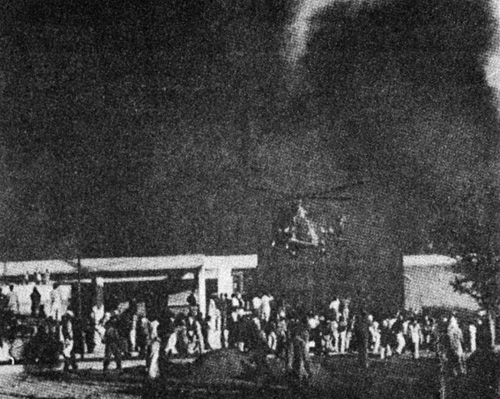
November, 1979: A Pakistan army helicopter hovers over the U.S. embassy, burned by an “Islamic fundamentalist” mob with the tactic encouragement of Zia’s government.
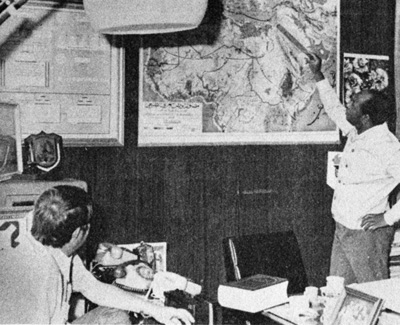
Billy Carter learns strategy from an official of the Qaddafi regime in Libya, another country where its U.S. embassy was burned in late 1979.

The U.S. Navy’s Office of Naval Research building in Washington D.C., where Khomeini’s espionage agent Capt. Siavash Setoudeh maintained an office complex for months after the hostage seizure.

The Washington D.C. rug dealership front for Bahram Nahidian—the Savama chief in the U.S. under Khomeini, who is the controller of Setoudeh and of Khomeini’s “hit teams.”
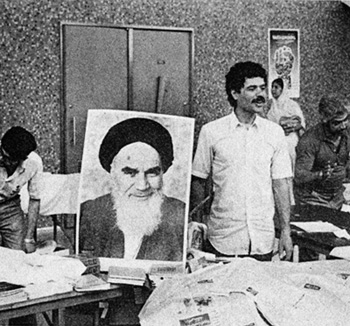
The arm of the Muslim Brotherhood in the U.S., the Muslim Student Association, holds a national conference in Miami, Ohio in May 1980. The MSA, run top down by the Brotherhood from abroad, is financed from Iran through Bahram Nahidian’s networks.
“Pol Pot” in Iran

Iran, 1980: Heroin addicts in Tehran. In one year Iran and Pakistan surpassed Southeast Asia as the world’s primary source of opium.
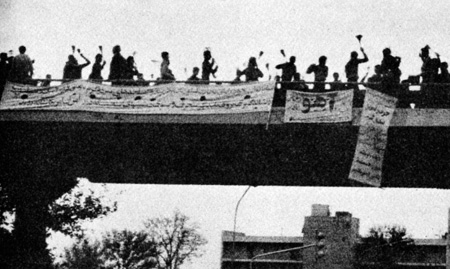
Iran, 1979: Frenzied worshippers flagellate themselves near the U.S. embassy.
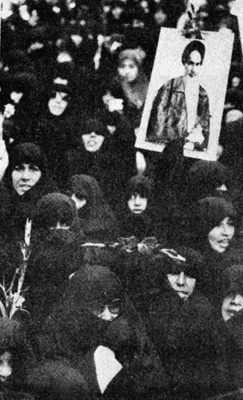
Iran, 1980: Khomeini’s social structure—back to the 12th century “destruction” of al-Ghazali.
The “Radical” Traitors
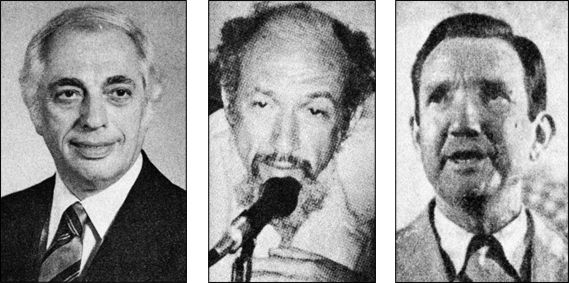
Bernard Lewis of Princeton University, the author of the design for the breakup of nations of the Middle East (left). Richard Falk at Princeton; the key pro-Khomeini organizer in Iran and the U.S. (middle). Ramsay Clark, Carter’s link to Khomeini before and after the Shah’s fall (right).
... and “Establishment” Traitors
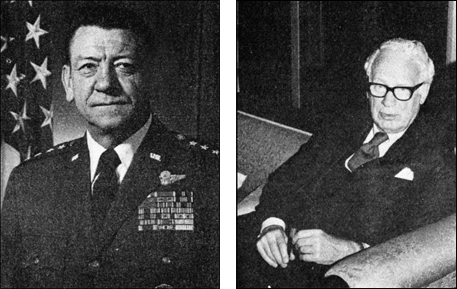
The U.S. Air Force Gen. Robert E. Huyser, the NATO emissary later blamed by many Iranians for undercutting the Shah (left); the CFR member George Ball who coordinated the political side of Huyser’s “shift to neutral” (right).
The British Operatives
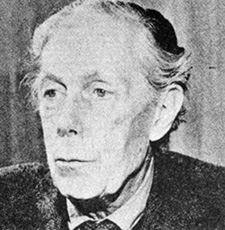
Anthony Blunt, the Art Curator to the Queen, visionary of sacerdotal revolutions, and sometime “Soviet Spy.”
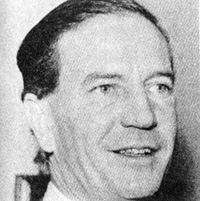
H.A.R. “Kim” Philby, Blunt’s recruit from Cambridge in 1932, who now shapes Middle East policy for the KGB.
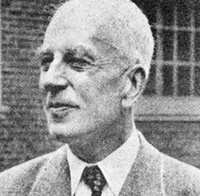
Historian Arnold Toynbee, the British intelligence “thinker” behind Blunt, Phillby, et al.
Historic Enemies
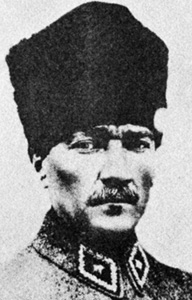
Kemal Ataturk, the Turkish Republic’s nationalist founder, in opposition to whose profound influence the Muslim Brother was founded.
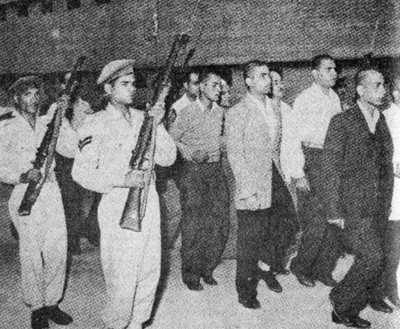
The Muslim Brotherhood rounded up in Egypt after their 1954 attempt to assassinate Egyptian President Gamel Abduel Nasser.
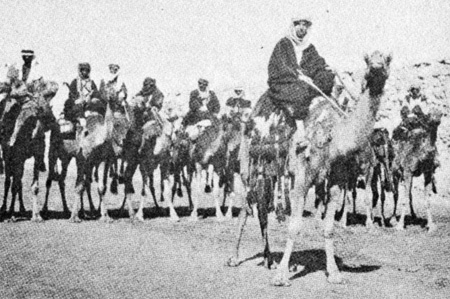
British Arabist H. St.-John Philby (“Kim” Philby’s father) on a camel in the Arabian desert, 1917.
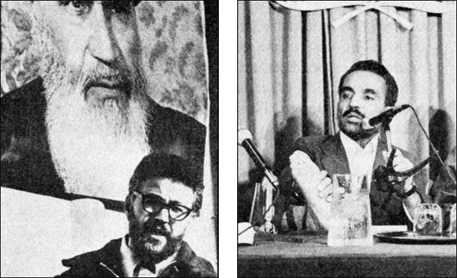
“Islamic fundamentalism” today: The U.S.-trained environmentalist Ibrahim Yazdi (left); the fanatical Iranian Prime Minister Mohammad-Ali Rajai (right).
Article Tree
| A Summary of Islam Related Issues |
| The book “Hostage to Khomeini” explains how Iran’s oppressive government has become covertly controlled by the global political elite |






